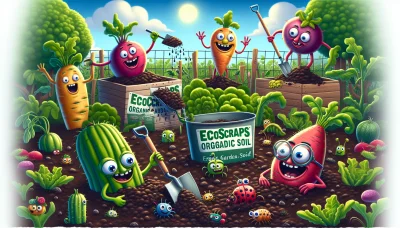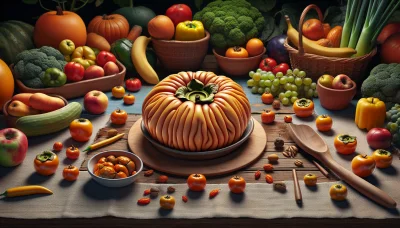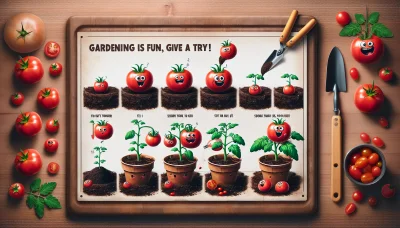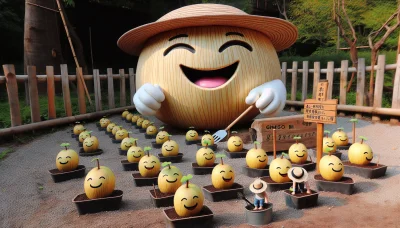Strawberry patch ideas Quiz
Test Your Knowledge
Question of
Strawberry Patch Ideas: Cultivating Sweetness in Your Garden
Growing strawberries in your garden can transform an ordinary space into a haven of sweetness and delight. This endeavor not only brings the joy of harvesting your own fresh, juicy strawberries but also adds a charming aesthetic to your garden landscape. For gardening enthusiasts, the process of cultivating these ruby gems is as rewarding as the harvest itself, offering a unique blend of satisfaction and anticipation as you watch your strawberry patch flourish.
Choosing the Right Spot for Your Strawberry Patch
When planning to grow strawberries, selecting the right location is crucial for a bountiful harvest. Strawberries thrive in areas that receive full sunlight for at least six to eight hours a day. This ample sunlight is essential for the plants to produce sweet and juicy fruits. Equally important is the soil quality; strawberries prefer well-draining soil rich in organic matter. Ensuring good drainage is vital to prevent root rot and other moisture-related diseases. By considering these key factors, gardeners can create an ideal environment for their strawberry patch to flourish.
Preparing the Soil for Strawberry Plants
To ensure your strawberry plants thrive, preparing the soil correctly is crucial. Start by testing the soil pH; strawberries prefer a slightly acidic environment, with an ideal range of 5.5 to 6.8. If necessary, adjust the pH by adding lime to raise it or sulfur to lower it, depending on your initial soil test results. Incorporating generous amounts of organic matter into the soil can significantly improve its structure and fertility. Well-rotted compost or aged manure will not only enrich the soil but also improve its drainage and aeration, essential factors for healthy strawberry root systems. Additionally, ensure the soil is well-tilled to a depth of at least 8-12 inches to accommodate the roots comfortably, breaking up any large clumps and removing weeds that could compete with your plants for nutrients and water.
Strawberry Planting Layouts
- Traditional Rows
- Raised Beds
- Container Gardens
Caring for Your Strawberry Patch
To maintain a healthy strawberry patch, it's essential to focus on proper watering, mulching, and fertilizing techniques. Strawberries require regular watering, especially during dry periods, to ensure the soil remains moist but not waterlogged. Mulching with straw or pine needles helps retain soil moisture, suppress weeds, and keep the fruit clean. When it comes to fertilizing, use a balanced fertilizer in early spring as the plants start to grow, and consider a second application after harvesting to prepare the plants for the next season. These steps will help ensure a bountiful strawberry harvest.
Pest Control and Disease Management in Strawberry Gardens
Strawberry plants, while delightful and fruitful, can fall prey to a variety of pests and diseases that threaten their health and productivity. Common pests include spider mites, aphids, and slugs, which can damage the plants by feeding on the leaves and fruits. Diseases such as powdery mildew, leaf spot, and root rot can also severely impact strawberry plants. To manage these issues organically, gardeners can adopt several strategies. Introducing beneficial insects like ladybugs can help control aphid populations, while regular weeding and the use of straw mulch can reduce the habitat for slugs and minimize fungal diseases. For fungal issues, applying organic fungicides such as sulfur or using baking soda sprays can be effective. Ensuring proper plant spacing and watering practices can also significantly reduce the risk of diseases by improving air circulation and reducing leaf wetness, respectively. Embracing these organic methods not only helps in keeping strawberry gardens healthy but also ensures that the fruits remain safe and chemical-free for consumption.
Harvesting and Enjoying Your Strawberries
Knowing when your strawberries are ready to harvest is key to enjoying the sweetest fruits. Look for berries that are fully red, without white or green areas, as these are indicators of full ripeness. The best time to pick them is in the late morning, after the dew has evaporated but before the day gets too hot. Gently twist the berries off the stem to avoid bruising them. Once harvested, your strawberries can be enjoyed in a myriad of ways. Eating them fresh is a delightful treat, capturing the essence of summer with every bite. For a longer-lasting enjoyment, consider making homemade jams or preserves, allowing you to savor the flavors of the season well into the year. Strawberries also make fantastic additions to desserts, from classic strawberry shortcakes to refreshing sorbets and vibrant salads. With a little creativity, you can enjoy the fruits of your labor in delicious and satisfying ways.












